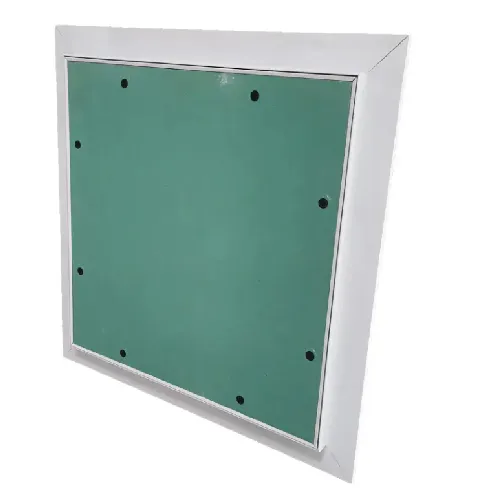Dec . 04, 2024 08:42 Back to list
Grid Ceiling Panel Solutions for Modern Interior Design Spaces
Exploring the Grid Ceiling Board An Essential Element of Modern Architecture
In the realm of architectural design and construction, the choice of materials and structural elements plays a pivotal role in shaping both functionality and aesthetics. Among these materials, the grid ceiling board has gained significant attention for its versatile applications, making it a staple in modern design. This article delves into what grid ceiling boards are, their benefits, applications, and considerations for their use in contemporary architecture.
What is a Grid Ceiling Board?
A grid ceiling board, often referred to as a drop ceiling or suspended ceiling, consists of a grid structure fabricated from metal or other materials that supports ceiling tiles. These tiles can be made from various substances such as mineral fiber, fiberglass, and acoustic panels. The grid system is suspended from the original ceiling structure, creating a cavity between the two. This space not only allows for the installation of lighting, air conditioning, and other utilities but also helps in managing acoustics within a space.
Benefits of Grid Ceiling Boards
1. Aesthetic Versatility Grid ceiling boards come in various colors, textures, and designs, allowing architects and designers to create unique visual environments. Whether in a corporate office, a retail store, or a healthcare facility, the choice of ceiling tiles can significantly influence the overall ambiance of a space.
2. Acoustic Control One of the primary functions of grid ceiling boards is sound attenuation. The materials used in ceiling tiles, particularly acoustic tiles, can absorb sound, reducing noise pollution in busy environments. This is particularly beneficial in offices, schools, and restaurants where a quieter atmosphere is essential for productivity and comfort.
3. Ease of Installation and Maintenance The suspended design of grid ceilings makes installation straightforward. Tiles can be easily removed or replaced without disrupting the entire ceiling structure, which is advantageous for maintenance and repairs. This accessibility also facilitates the installation of lighting and HVAC systems without extensive remodeling.
4. Height Management Grid ceiling boards allow architects to manage ceiling height effectively. By hanging ceilings lower than the original structure, designers can create a more intimate space, which can be particularly useful in large areas where a high ceiling might feel impersonal.
grid ceiling board

5. Energy Efficiency Some ceiling tiles are designed to reflect heat and light, contributing to overall energy efficiency in buildings. By improving thermal insulation, grid ceilings can help reduce heating and cooling costs, making them a sustainable choice in modern construction.
Applications of Grid Ceiling Boards
Grid ceiling boards have found applications across various sectors. In commercial buildings, they are widely used in offices, conference rooms, and retail spaces, providing both functional and aesthetic benefits. In educational institutions, they enhance acoustics and improve the overall learning environment. Healthcare facilities utilize grid ceilings to help maintain sanitary conditions; tiles can be easily cleaned or replaced, ensuring a sterile environment is upheld.
Residential applications are also on the rise, particularly in basements and large living spaces. Homeowners appreciate the ability to install recessed lighting or add layers of insulation without compromising the overall design of their homes.
Considerations for Use
While grid ceiling boards offer numerous advantages, there are factors to consider. The initial cost, while reasonable, can add up depending on the complexity of the installation and the choice of tiles. Additionally, the space between the original and dropped ceilings can accumulate dust and debris, necessitating regular maintenance.
Another consideration is the potential for reduced ceiling height. In spaces with lower ceilings, choosing a grid ceiling board may make the area feel cramped. It is crucial for designers to balance these elements to achieve the desired aesthetic and functionality.
Conclusion
In conclusion, grid ceiling boards represent a blend of form and function, playing a crucial role in modern architecture. Their adaptability, acoustic benefits, and ease of maintenance make them a popular choice across various sectors. As architects continue to innovate and seek sustainable solutions, grid ceiling boards will undoubtedly remain a central element in the design of contemporary spaces. By understanding their benefits and considerations, builders and designers can create environments that are not only pleasing to the eye but also practical and efficient.
-
Quality Ceiling Trap Doors & Access Panels | Easy & Secure AccessNewsAug.30,2025
-
Durable Ceiling T Grid Systems | Easy InstallationNewsAug.29,2025
-
PVC Gypsum Ceiling: Durable, Laminated Tiles for Modern SpacesNewsAug.28,2025
-
Pvc Gypsum Ceiling Is DurableNewsAug.21,2025
-
Mineral Fiber Board Is DurableNewsAug.21,2025
-
Ceiling Tile Clip Reusable DesignNewsAug.21,2025







